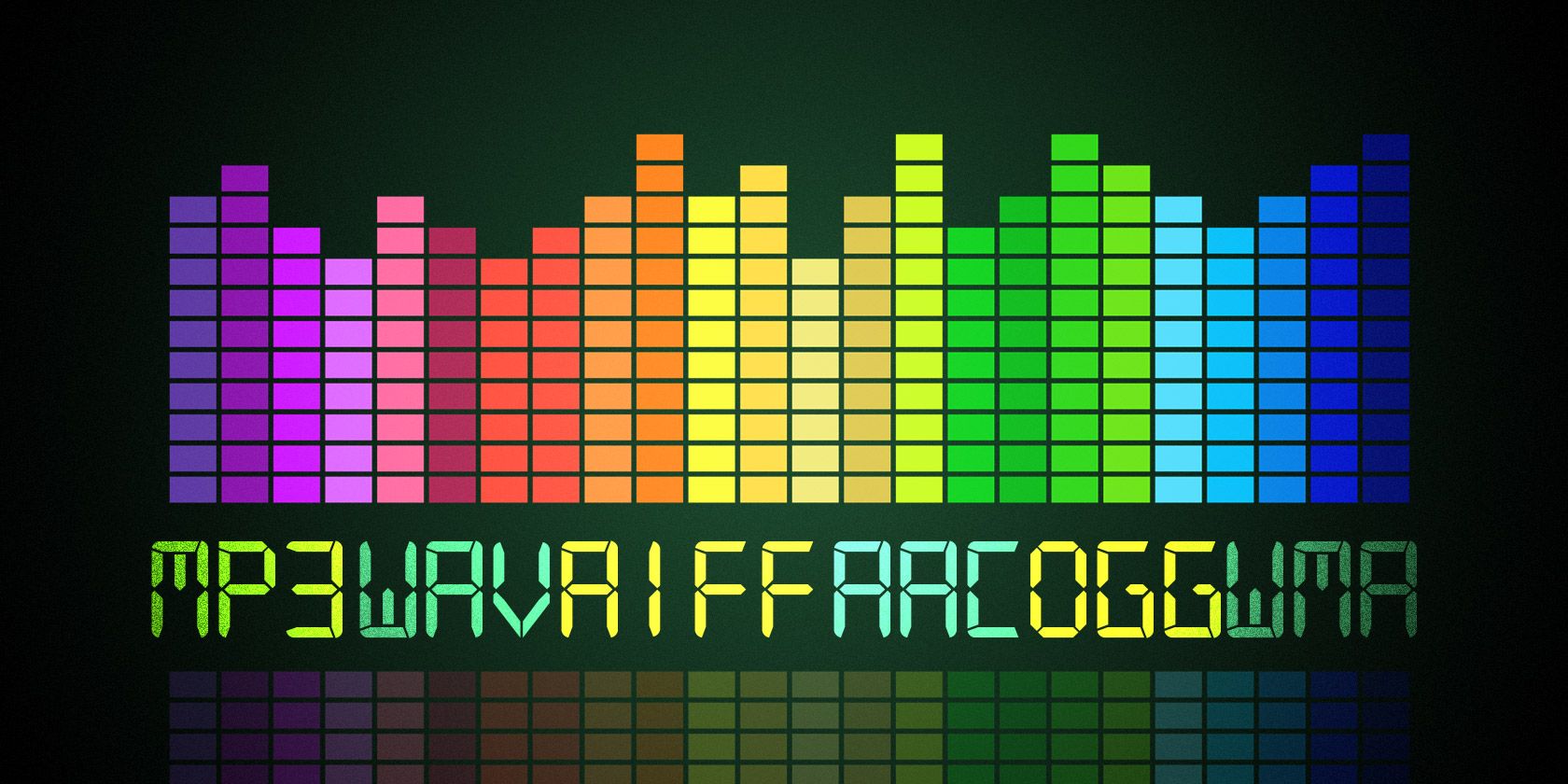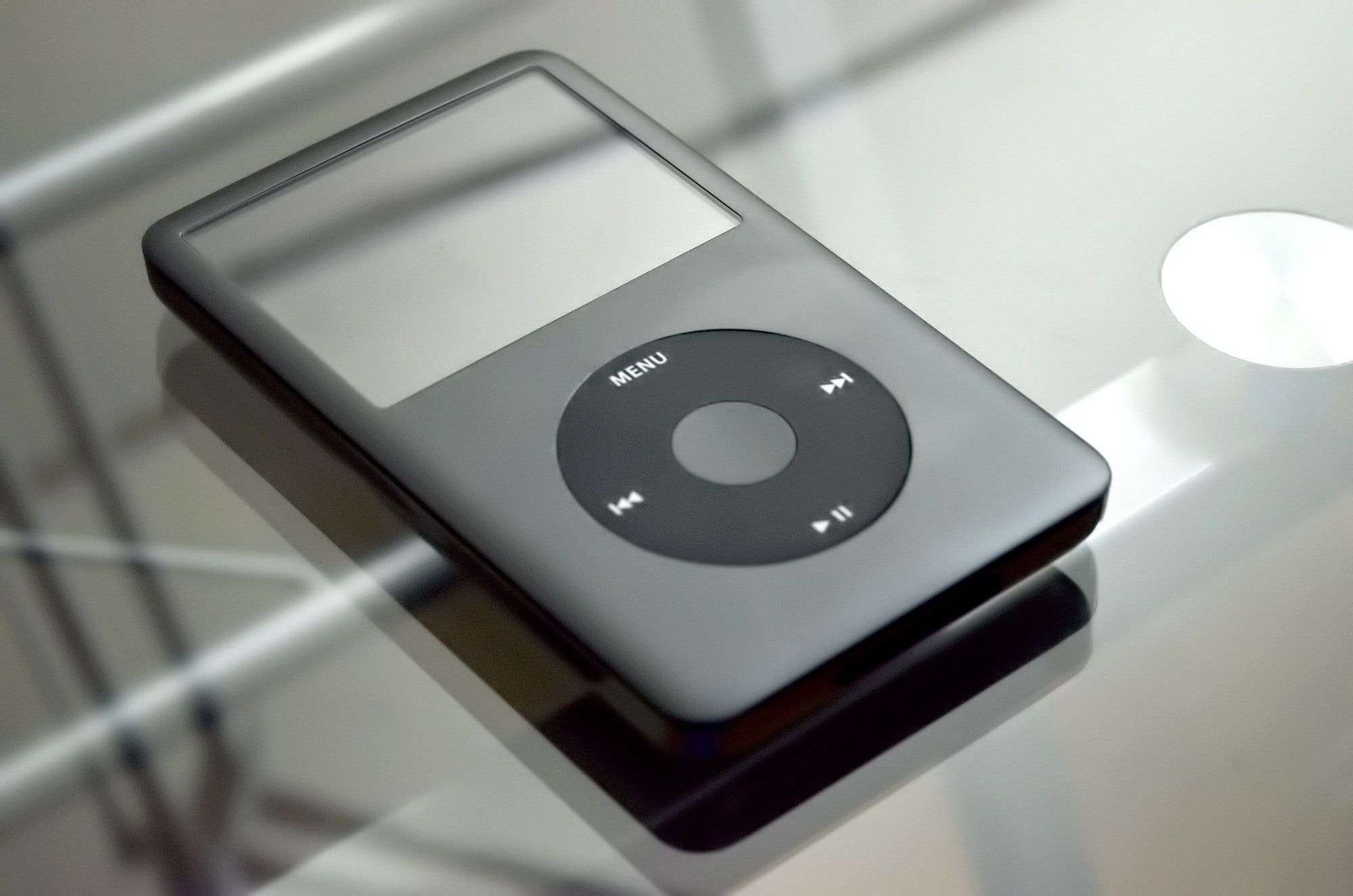Audio files come in all types and sizes. And while we may all be familiar with MP3, what about AAC, FLAC, OGG, or WMA? Why do so many audio file extensions exist? Is there a universal best audio file format? Which ones are important, and which ones can you ignore?
Once you realize that all audio formats fall into three major categories, it's quite simple. Once you know what the categories mean, you can pick a format within the category that best suits your needs. The following are common audio formats you should know.
Uncompressed Audio Formats
Uncompressed audio consists of real sound waves captured and converted to digital format without further processing. As a result, uncompressed audio files tend to be the most accurate but take up a lot of disk space—about 34 MB per minute for 24-bit 96KHz stereo. They're one of the storage-guzzling audio file formats in multimedia.
1. Audio File Format: PCM
PCM stands for Pulse-Code Modulation, a digital representation of raw analog audio signals. Analog sounds exist as waveforms. To convert a waveform into digital bits, the sound must be sampled and recorded at certain intervals (or pulses).
This digital audio format has a "sampling rate" (how often a sample is made) and a "bit depth" (how many bits are used to represent each sample). There is no compression involved. Digital recording is a close-to-exact representation of analog sound.
PCM is the most common audio format used in CDs and DVDs. There is a subtype of PCM called Linear Pulse-Code Modulation, where samples are taken at linear intervals. LPCM is the most common form of PCM, which is why the two terms are almost interchangeable at this point.
2. Audio File Format: WAV
WAV stands for Waveform Audio File Format (also called Audio for Windows at some point but not anymore). It's a standard developed by Microsoft and IBM in 1991.
Many assume that all WAV files are uncompressed audio files, but that's not true. WAV is a Windows container for different music formats. This means a WAV file could potentially contain compressed audio, but it's rarely used for that.
Most WAV files contain uncompressed audio in PCM format. The WAV file is just a wrapper for the PCM encoding, making it more suitable for Windows systems. However, Mac systems can usually open WAV files without any issues.
3. Audio File Format: AIFF
AIFF stands for Audio Interchange File Format. Similar to how Microsoft and IBM developed WAV for Windows, AIFF is an audio file format developed by Apple for Mac systems back in 1988.
Another audio format similar to WAV files, AIFF files can contain multiple audio formats. For example, there is a compressed version called AIFF-C and another version called Apple Loops used by GarageBand and Logic Pro. They both use the same AIFF extension.
Most AIFF files contain uncompressed audio in PCM format. The AIFF file is just a wrapper for the PCM encoding, making it more suitable for use on Mac systems. However, Windows systems can usually open AIFF files without any issues.
Audio Formats With Lossy Compression
Lossy compression is when some data is lost during the compression process—and compression is important because uncompressed audio takes up lots of disk space.
In other words, lossy compression means sacrificing sound quality and audio fidelity for smaller file sizes. When it's done poorly, you'll hear artifacts and other weirdness in the audio. But when it's done well, you can't hear the difference.
4. Audio File Format: MP3
MP3 stands for MPEG-1 Audio Layer 3. It was released back in 1993 and exploded in popularity, eventually becoming the most popular audio format in the world for music files. There's a reason we had "MP3 players" but not "OGG players!"
The main goal of MP3 is three-fold:
- To drop all the sound data that exists beyond the hearing range of normal people.
- To reduce the quality of sounds that aren't easy to hear.
- To compress all other audio data as efficiently as possible.
Nearly every digital device in the world with audio playback can read and play MP3 files, whether we're talking PCs, Macs, Androids, iPhones, Smart TVs, or whatever else. When you need universal, MP3 will never let you down, which is why it's one of the world's most popular audio file formats.
Note: MP3 is not the same as MP4! The difference between the audio file extensions is simple: MP3 covers audio only, while MP4 includes audio and video. So, an MP3 player only supports audio, but an MP4 player can play audio and video media types.
5. Audio File Format: AAC
AAC stands for Advanced Audio Coding. It was developed in 1997 as the successor to MP3; while it caught on as a popular digital audio format, it never overtook MP3 as the most popular.
The compression algorithm used by AAC is much more advanced and technical than the MP3 music file type, so when you compare the same recording in MP3 and AAC formats at the same bitrate, the AAC one will generally have better sound quality.
Even though MP3 is more of a household format, AAC is still widely used today. It's the standard audio compression method used by YouTube, Android, iOS, iTunes, later Nintendo portables, and later PlayStations.
6. Audio File Format: OGG (Vorbis)
OGG doesn't stand for anything. Actually, it's not even a compression format. Instead, OGG is a multimedia container that can hold all kinds of compression formats but is most commonly used to hold Vorbis files—which is why these audio file types are called Ogg Vorbis files.
Vorbis was first released in 2000 and grew in popularity for two reasons: It adheres to the principles of open-source software and performs significantly better than most other lossy compression formats (meaning it produces a smaller file size for equivalent audio quality).
MP3 and AAC have such strong footholds that OGG has had a hard time breaking into the spotlight—not many devices support it natively—but it's getting better with time. For now, it's mostly used by hardcore proponents of open-source software.
7. Audio File Format: WMA (Lossy)
WMA stands for Windows Media Audio. It was first released in 1999 and has undergone several evolutions since then, all while keeping the same WMA name and extension. It's a proprietary format created by Microsoft.
Not unlike AAC and OGG, WMA was meant to address some flaws in the MP3 compression method—and it turns out that WMA's approach to compression is pretty similar to those of AAC and OGG. So yes, in terms of objective compression quality, WMA is actually the better audio file type than MP3.
But since WMA is proprietary, not many devices and platforms support it. It also doesn't offer any real benefits over AAC or OGG, so when MP3 isn't good enough, it's simply more practical to go with one of those two instead of WMA.
Audio Formats With Lossless Compression
Opposite lossy compression is lossless compression, a method that reduces an audio file's size without ANY data loss between the source and the compressed audio files.
The downside is that lossless compressed audio files are bigger than lossy compressed audio files—up to 2x to 5x larger for the same source file.
8. Audio File Format: FLAC
FLAC stands for Free Lossless Audio Codec. Maybe it is a bit on the nose, but it has quickly become one of the most popular lossless formats available since its introduction in 2001.
What's nice is that FLAC can compress an original source file by up to 60 percent without losing a single bit of data. What's even nicer is that FLAC is an open-source and royalty-free audio file format, so it doesn't impose any intellectual property constraints.
FLAC is supported by most major programs and devices and is the main alternative to MP3 for music. With it, you get the full quality of raw uncompressed audio at half the file size. That's why many see FLAC as the best audio format.
9. Audio File Format: ALAC
ALAC stands for Apple Lossless Audio Codec. It was developed and launched in 2004 as a proprietary format but eventually became open-source and royalty-free in 2011. ALAC is sometimes referred to as Apple Lossless.
While ALAC is good, it's slightly less efficient than FLAC regarding compression. However, Apple users don't have a choice between the two because iTunes and iOS both provide native support for ALAC and no support for FLAC.
Looking for help playing hi-res audio on your iPhone or iPad? Check out our guide.
10. Audio File Format: WMA (Lossless)
WMA stands for Windows Media Audio. We covered this above in the lossy compression section, but we mention it here because there's a lossless alternative called WMA Lossless that uses the same extension. Confusing, I know.
Compared to FLAC and ALAC, WMA Lossless is the worst in terms of compression efficiency—but not by much. It's a proprietary format, so it's no good for fans of open-source software, but it's supported natively on both Windows and Mac systems.
The biggest issue with WMA Lossless is the limited hardware support. If you want to play lossless compressed audio across multiple devices and platforms, you should stick with FLAC.
Which Audio File Format Is Right for You?
When choosing an audio format, uncompressed files are best when working with raw audio, while lossless compression, like FLAC, provides excellent quality for music listening but requires more storage. For casual listening, lossy formats like MP3 can save space without much discernible quality reduction.
However, high-quality audio files won't matter if your playback device can't faithfully recreate those sounds. Choose formats based on your audio quality needs and storage constraints, knowing lossless is best for purists while lossy works for casual listeners wanting smaller files.



